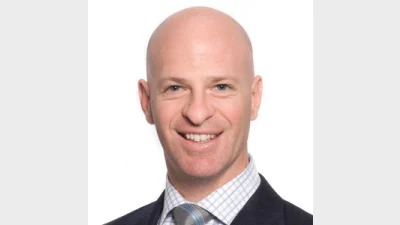Why asset managers must get involved in SMSFs



Asset managers need to figure out how they can get involved in the booming SMSF sector, according to Bennelong Funds Management's Jarrod Brown.
According to figures released by the Australian Taxation Office, as at December 2012 there were nearly half a million self-managed super funds (SMSFs) in Australia, run by over one million trustees and controlling a massive $474 billion in assets.
Even more astounding is the fact that SMSF trustees control around 30 per cent of all superannuation money held by Australians – only 10 years ago, this figure was closer to 10 per cent.
When I attended the SMSF Professionals’ Association of Australia Conference last year, the buzz was palpable.
Everyone knows the SMSF train is not just coming – it’s gaining momentum every day but while some are desperately trying to not get run over, the more astute want to understand how to jump on-board.
‘I can do it!’
Investors move into SMSFs for a number of reasons; one assumption is the belief they can achieve better performance managing their own investments.
This is particularly true in difficult economic times, when returns are generally lower, and investors are more likely to question the fees paid to asset managers.
While the reality is most investors don’t achieve better performance than the professionals, unfortunately this fact doesn’t lessen the challenge for asset managers.
It is contingent on us to demonstrate our investment capabilities and prove our value proposition. We need to ask ourselves: “how does the investor find me?”, and that means communicating our value proposition to advisers and intermediaries, but also the self-directed investors.
Cost-focus can lead investors astray
A focus on cost without looking at total return can be a trap for investors, who end up looking at the wrong things, and losing out as a result. And this has been a trap for SMSFs as well.
I have noticed a trend towards the assumption that lower costs will be a net driver of growth; and of course, if everything in the equation stays the same, reducing costs will make profits look healthier.
But cost reduction certainly isn’t a long-term strategy in any business. In investments, like life, you very often get what you pay for. Low cost doesn’t translate into better value or higher overall returns.
Performance fees – so often held up as contrary to investor interest – can in fact perfectly align investors’ desire for return and investment managers’ desire to perform.
Technology – the big game changer
Investors are demanding more transparent information and better communication than ever before.
According to industry analysts, improvements in administration tools have made managing your own super easier than before, and this has also contributed to the number of investors moving into the sector.
Only a few years ago, administering SMSFs was the almost exclusive domain of mid-tier accounting firms and financial advice consultancies, as it was considered too time-consuming, and therefore not cost-effective for the larger players.
However, some of the largest competitors in financial services have entered the market with a vengeance, confident that doing the administration chores will ultimately lead to profits through cross-selling of financial advice and investment products.
For boutique investment managers like Bennelong, this doesn’t spell disaster. Far from it.
Our skills lie in investment management, and if we can work with the larger players so that investors, whether they be in SMSFs or not, have access to our investment capabilities, that’s great.
My view is that technology allows for a closer connection between the investor and the investment solution, something that has not been possible in the same way in the past.
Communication remains the key
So ultimately, what should asset managers be doing to appeal to SMSF investors? How do they get on board the train?
Needless to say, I don’t have all the answers. But the process must surely start with better communication with investors and financial intermediaries alike.
That means better communication around investment management – and around the value that professional investment managers can add to your total portfolio, whether or not it is held in an SMSF.
Jarrod Brown is the chief executive officer of Bennelong Funds Management.
Originally published in Money Management.
Recommended for you
Data and technology provider Novigi has acquired Iress’ superannuation consulting and managed services business from Apex Group.
AMP is to launch a digital advice service to provide retirement advice to members of its AMP Super Fund, in partnership with Bravura Solutions.
Unveiling its performance for the calendar year 2024, AMP has noted a “careful” investment in bitcoin futures proved beneficial for its superannuation members.
SuperRatings has shared the median estimated return for balanced superannuation funds for the calendar year 2024, finding the year achieved “strong and consistent positive” returns.









